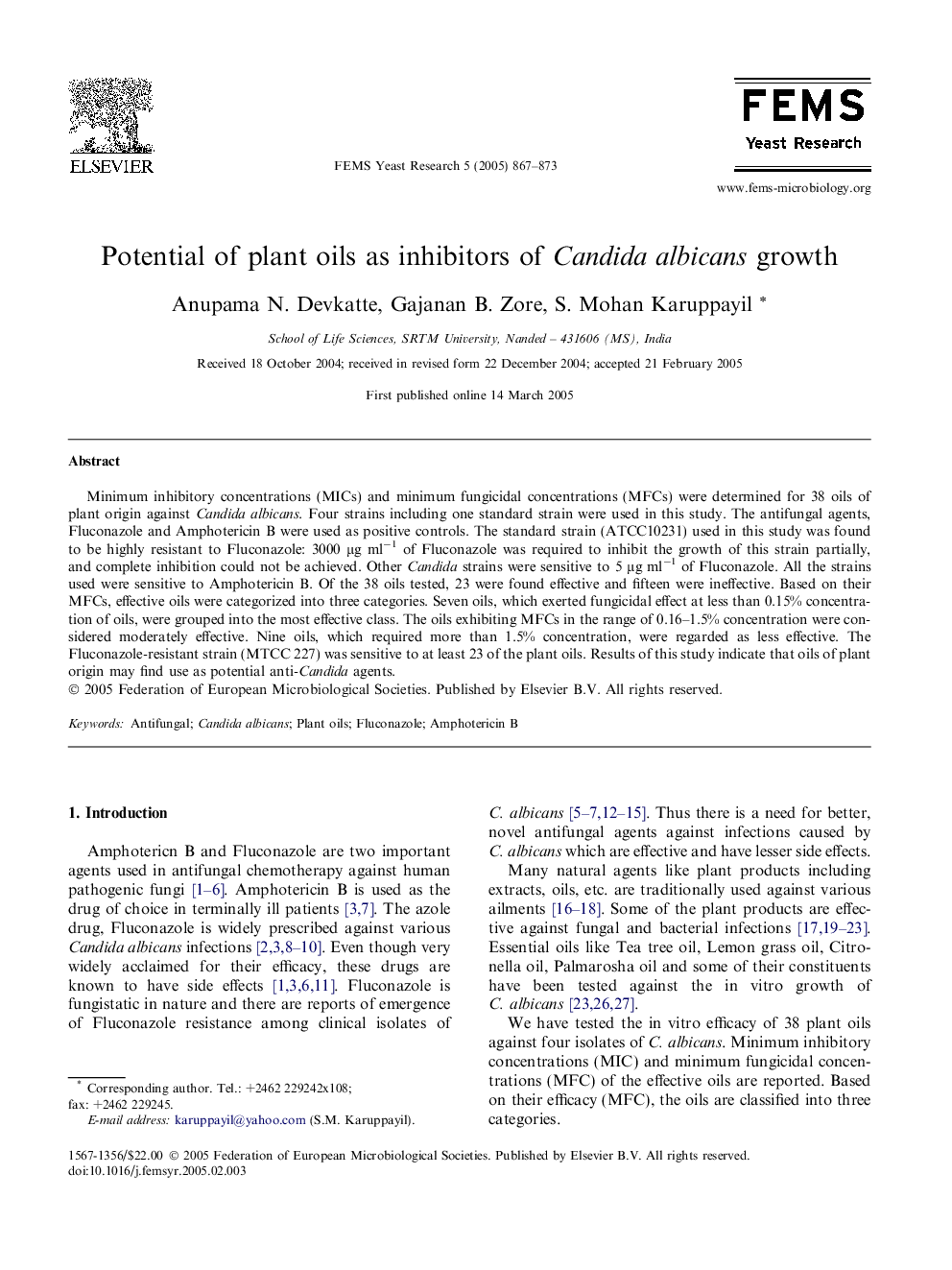| Article ID | Journal | Published Year | Pages | File Type |
|---|---|---|---|---|
| 9278920 | FEMS Yeast Research | 2005 | 7 Pages |
Abstract
Minimum inhibitory concentrations (MICs) and minimum fungicidal concentrations (MFCs) were determined for 38 oils of plant origin against Candida albicans. Four strains including one standard strain were used in this study. The antifungal agents, Fluconazole and Amphotericin B were used as positive controls. The standard strain (ATCC10231) used in this study was found to be highly resistant to Fluconazole: 3000 μg mlâ1 of Fluconazole was required to inhibit the growth of this strain partially, and complete inhibition could not be achieved. Other Candida strains were sensitive to 5 μg mlâ1 of Fluconazole. All the strains used were sensitive to Amphotericin B. Of the 38 oils tested, 23 were found effective and fifteen were ineffective. Based on their MFCs, effective oils were categorized into three categories. Seven oils, which exerted fungicidal effect at less than 0.15% concentration of oils, were grouped into the most effective class. The oils exhibiting MFCs in the range of 0.16-1.5% concentration were considered moderately effective. Nine oils, which required more than 1.5% concentration, were regarded as less effective. The Fluconazole-resistant strain (MTCC 227) was sensitive to at least 23 of the plant oils. Results of this study indicate that oils of plant origin may find use as potential anti-Candida agents.
Related Topics
Life Sciences
Immunology and Microbiology
Applied Microbiology and Biotechnology
Authors
Anupama N. Devkatte, Gajanan B. Zore, S. Mohan Karuppayil,
